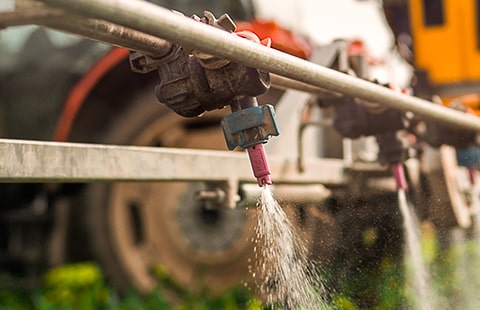Get unique, complex parts easily. No matter your requirements, Chaoyi Spring creates hard-to-produce coil springs and wire forms.
Let us help you create the custom wire form you need, from S-hooks and J-hooks to utility hooks and more.
We work closely with customers across a wide range of industries, helping them design and manufacture made-to-order parts.
Why choose Chaoyi Spring? We prioritize customer-focused collaboration, modern equipment and the latest technology to make your parts per print.
Find the information and guidance you need, from measuring a spring to learning about materials, placing an order and much more.
The world of springs is fascinating, filled with intricate designs and complex mechanics. While springs may seem simple, they play a crucial role in countless applications, from the delicate workings


The world of springs is fascinating, filled with intricate designs and complex mechanics. While springs may seem simple, they play a crucial role in countless applications, from the delicate workings of a watch to the heavy-duty suspension of a truck. And at the heart of understanding these marvels of engineering lie formulas. These formulas, often referred to as compression spring formulas, allow us to calculate the characteristics of a spring, enabling us to choose the right spring for a particular application. Let's delve into the world of these formulas and understand the magic they hold.

Compression springs, as their name suggests, are designed to resist compressive forces. When a load is applied, they shorten, storing energy like a coiled-up spring ready to unleash its potential. Their versatility makes them ideal for various applications, from cushioning impacts to providing a return force.
Compression spring formulas are mathematical equations that allow us to determine a spring's key characteristics, such as:
Let's examine some core formulas that hold the key to understanding compression spring behavior:
The spring rate (k) is a crucial parameter as it dictates how stiff a spring is. The formula for calculating the spring rate is:
k = (G * d^4) / (8 * D^3 * n)
Where:
The force exerted by a compressed spring is directly related to its spring rate and deflection. The formula is:
F = k * δ
Where:
The amount a spring compresses under a given force is represented by the spring deflection. The formula is:
δ = F / k
Where:
Let's illustrate the application of these formulas with a practical example. Imagine we need to design a compression spring for a mechanical device. We know the desired force required for a specific compression distance. Using the formulas, we can work backward to determine the ideal spring rate and dimensions.
Let's say we need a spring that exerts 100 N of force when compressed by 2 cm. Using the spring force formula (F = k * δ), we can calculate the spring rate:
k = F / δ = 100 N / 0.02 m = 5000 N/m
Now, we need to determine the spring's wire diameter, mean coil diameter, and number of coils. To do this, we can use the spring rate formula and additional factors such as the desired spring length and the type of spring material.
While the fundamental formulas provide a good starting point, other factors influence the behavior of a compression spring. These include:
While compression spring formulas are valuable tools, achieving optimal spring performance requires a blend of precision and collaboration. It's crucial to select materials with the right properties, design the spring dimensions meticulously, and consider the operating environment. Moreover, collaborating with spring manufacturers with expertise in spring design and manufacturing processes can lead to successful outcomes.
The world of springs is continually evolving. Innovations in materials, manufacturing techniques, and design software are pushing the boundaries of what's possible with springs. From springs with variable stiffness, allowing for adaptable response, to springs designed for extreme conditions, the future of spring technology promises exciting possibilities.
Understanding compression spring formulas is a key step in harnessing the power of these remarkable devices. By grasping the principles behind these formulas, we gain the ability to design and select the right springs for various applications. Whether it's a delicate spring in a watch or a robust spring in a heavy-duty machine, these formulas serve as the backbone of efficient and reliable spring performance.
Browse some of the custom wire forms and springs that we manufacture. Don’t see what you need? We specialize in made-to-order products that meet your application requirements.
Visit Our GalleryNeed a custom wire form or coil spring? We make it work. Fill out the contact form and a representative will respond within 1 business day. If you have a PDF or CAD file, you can submit to request a quote.